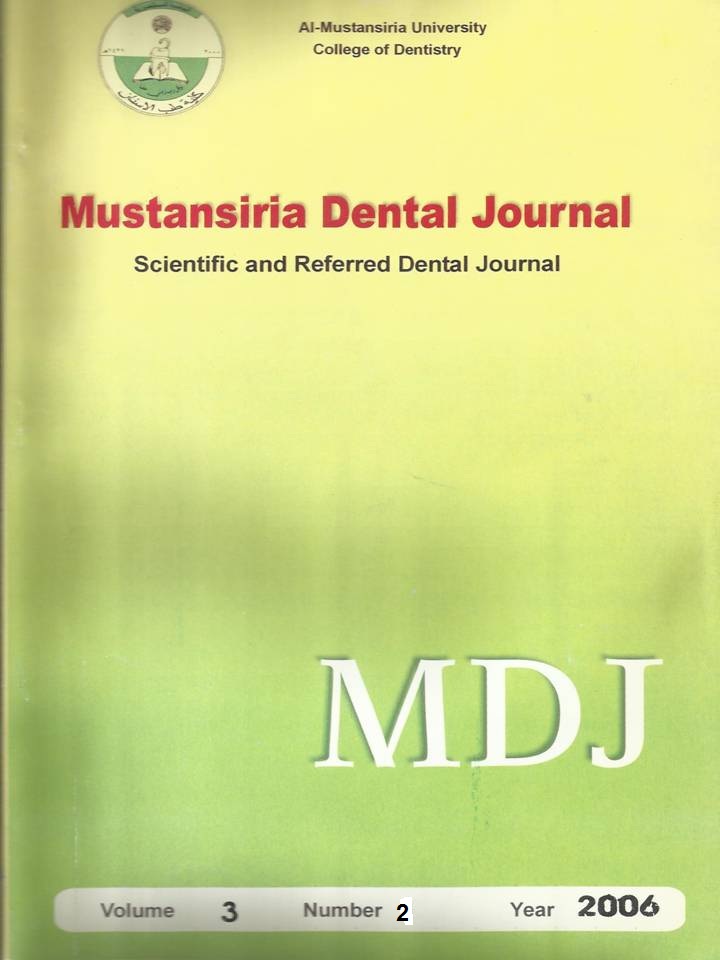Radiological accuracy of two different systems (Digital & Conventional) in endodontic apical fitness
DOI:
https://doi.org/10.32828/mdj.v3i2.625Keywords:
Key Words: conventional, digital, apical fitness, endodonticsAbstract
Aim: The present study compares the accuracy of conventional and digital
radiographic system in the determination of apical fitness in endodontic therapy.
Method: Thirty three root canals of first upper and lower molar teeth were used in
this study; a K-file was inserted into the canal until its tip was fit snuggly one
millimeter shorter than the apex. Each tooth was radiographed twice with two
different radiographic systems; conventional & digital systems. The right-angle
paralleling technique with film holders was used in both systems. The distance
between the file tip and the center of radiographical apex from both imaging systems
was measured by two examiners and the mean of each two measurements was
recorded, the data was collected and analyzed statistically by paired t- test.
Results: The mean value of radiographic length reveals that there is a very small
difference between the measurements of conventional radiographic system
(0.8727mm) and those measurements of digital radiographic system (0.8367mm)
when compared with the real length measurements (1mm). Paired t-test shows
that there is no significant difference (p < 0.05) was founded between the real
measurements and the radiographic measurements are taken from both conventional
and digital systems. In conclusion both the conventional and digital imaging systems
can be used accurately for working length determination in an endodontic therapy.
Downloads
Published
Issue
Section
License
The Journal of Mustansiria Dental Journal is an open-access journal that all contents are free of charge. Articles of this journal are licensed under the terms of the Creative Commons Attribution International Public License CC-BY 4.0 (https://creativecommons.org/licenses/by/4.0/legalcode) that licensees are unrestrictly allowed to search, download, share, distribute, print, or link to the full texts of the articles, crawl them for indexing and reproduce any medium of the articles provided that they give the author(s) proper credits (citation). The journal allows the author(s) to retain the copyright of their published article.
Creative Commons-Attribution (BY)









